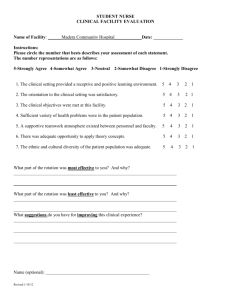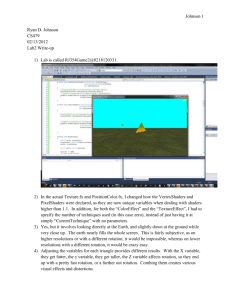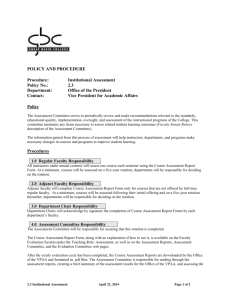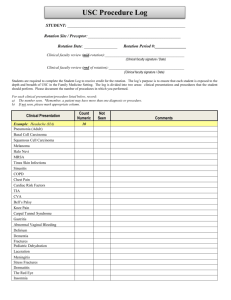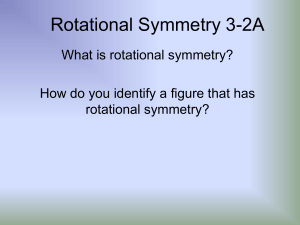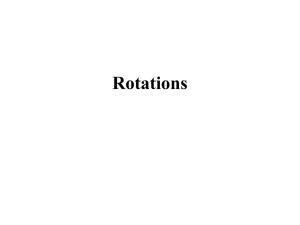EVOLUTION OF NEOs ROTATION RATE DUE TO REPEATED
advertisement
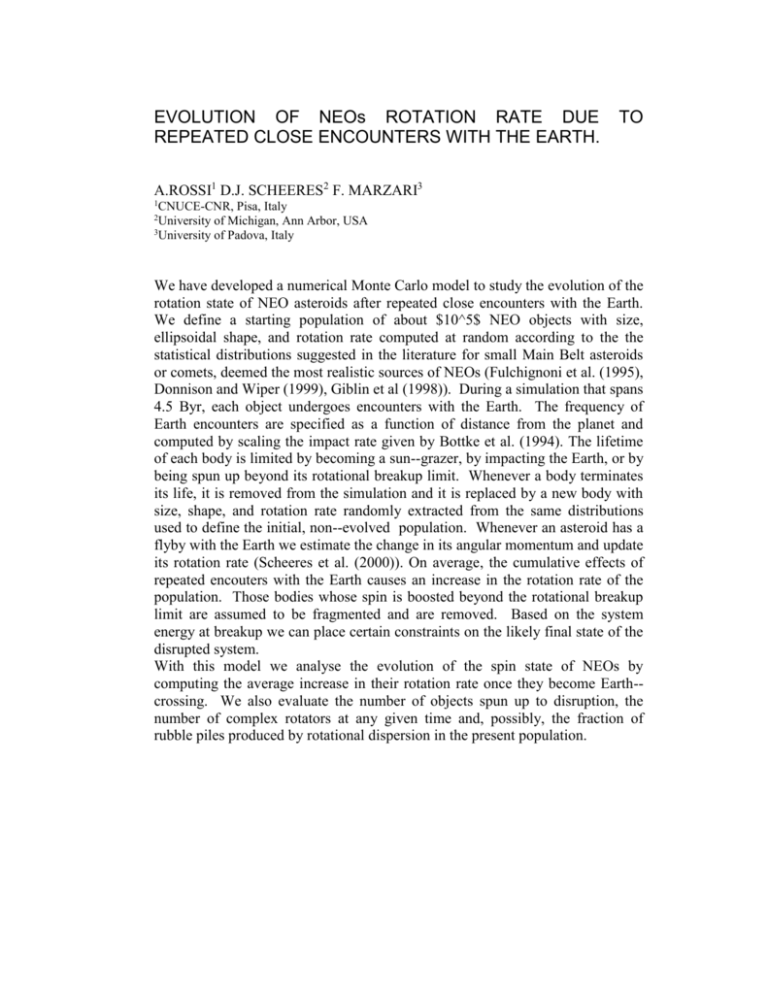
EVOLUTION OF NEOs ROTATION RATE DUE REPEATED CLOSE ENCOUNTERS WITH THE EARTH. TO A.ROSSI1 D.J. SCHEERES2 F. MARZARI3 1 CNUCE-CNR, Pisa, Italy University of Michigan, Ann Arbor, USA 3 University of Padova, Italy 2 We have developed a numerical Monte Carlo model to study the evolution of the rotation state of NEO asteroids after repeated close encounters with the Earth. We define a starting population of about $10^5$ NEO objects with size, ellipsoidal shape, and rotation rate computed at random according to the the statistical distributions suggested in the literature for small Main Belt asteroids or comets, deemed the most realistic sources of NEOs (Fulchignoni et al. (1995), Donnison and Wiper (1999), Giblin et al (1998)). During a simulation that spans 4.5 Byr, each object undergoes encounters with the Earth. The frequency of Earth encounters are specified as a function of distance from the planet and computed by scaling the impact rate given by Bottke et al. (1994). The lifetime of each body is limited by becoming a sun--grazer, by impacting the Earth, or by being spun up beyond its rotational breakup limit. Whenever a body terminates its life, it is removed from the simulation and it is replaced by a new body with size, shape, and rotation rate randomly extracted from the same distributions used to define the initial, non--evolved population. Whenever an asteroid has a flyby with the Earth we estimate the change in its angular momentum and update its rotation rate (Scheeres et al. (2000)). On average, the cumulative effects of repeated encouters with the Earth causes an increase in the rotation rate of the population. Those bodies whose spin is boosted beyond the rotational breakup limit are assumed to be fragmented and are removed. Based on the system energy at breakup we can place certain constraints on the likely final state of the disrupted system. With this model we analyse the evolution of the spin state of NEOs by computing the average increase in their rotation rate once they become Earth-crossing. We also evaluate the number of objects spun up to disruption, the number of complex rotators at any given time and, possibly, the fraction of rubble piles produced by rotational dispersion in the present population.






